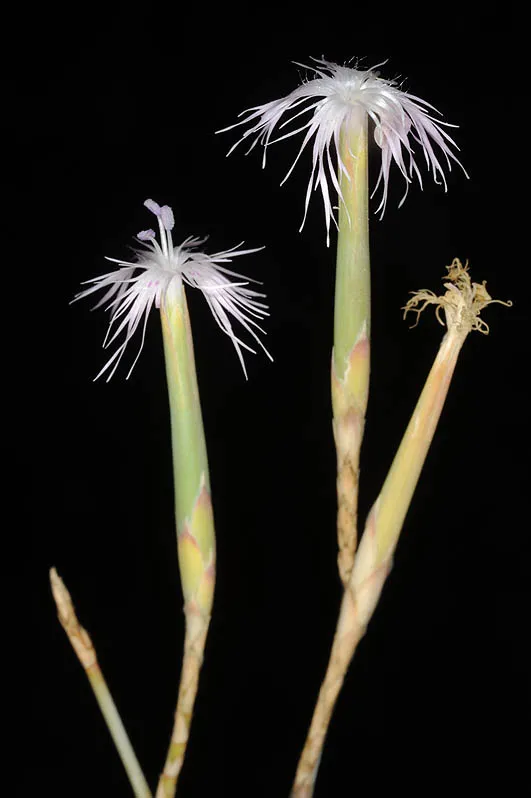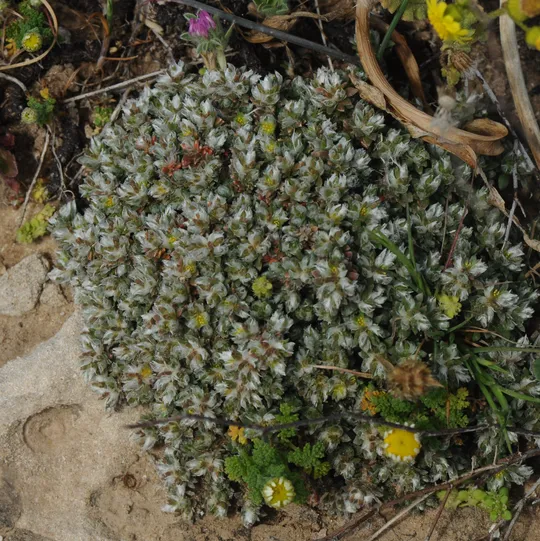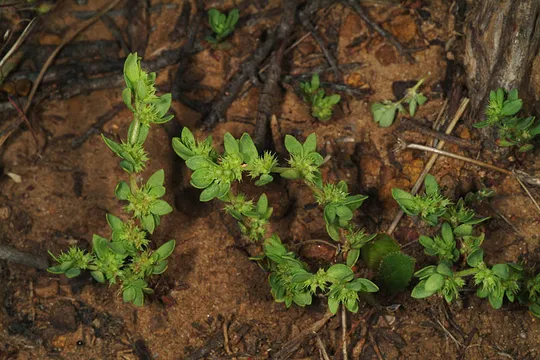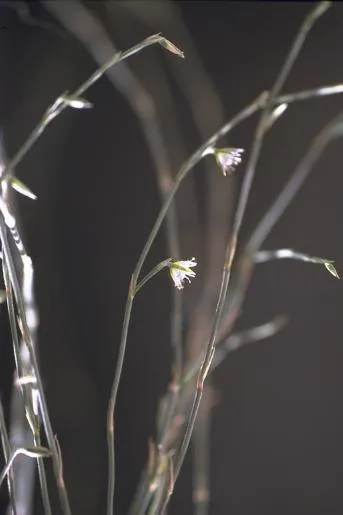Cyrum Pink
Dianthus cyri
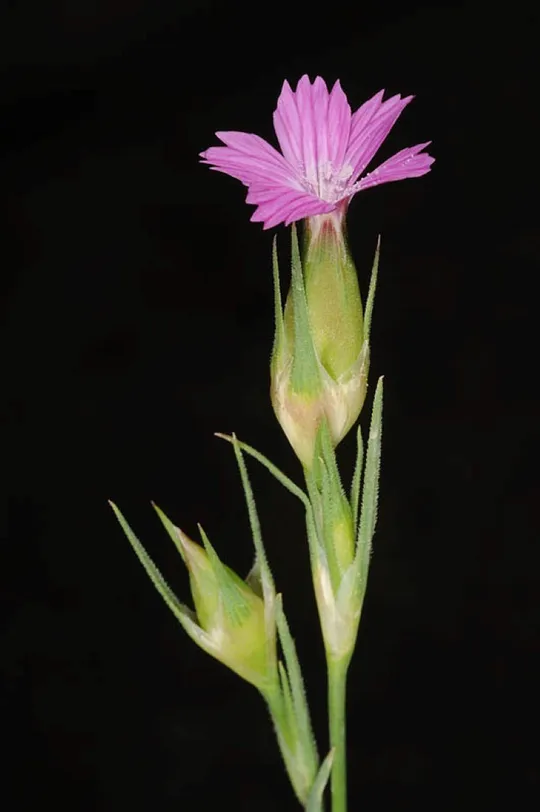
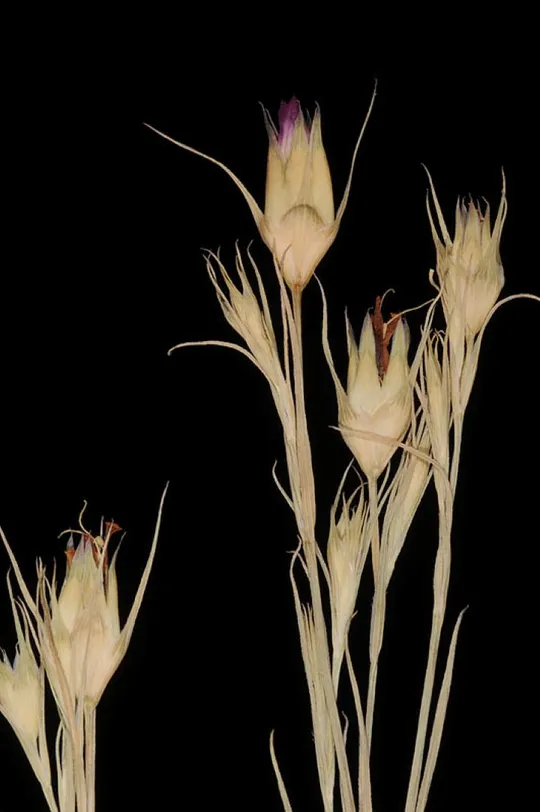
Dianthus cyri is extinct in
Israel. In the 1950s and 1960s it was collected in the Hula Valley from Kfar
Szold in the north to the Hula area, but was never found again. It was also
found once in the Kinarot Valley, but there too it was not found again. In the
literature, D. cyri is noted from the Carmel although no evidence
of that was found, not in the herbarium or in the field.
Herbaceous vegetation in deep alluvial soils, margins of
springs, wetlands and scrublands.
The genus Dianthus consists of about 300 species,
mostly perennial herbaceous plants or dwarf shrubs; a few species are annuals.
Most of the species grow in Europe and Asia, some in North Africa and a single
species in North America. D.cyri is one of two
annual Dianthus species in Israel. The second species is a very similar
plant, D. tripunctatus
whose flowers have characteristic dense veins on the calyx and calycule bracts that that do not
extend beyond the calyx.
This species is more common than D.
cyri and is
found scattered throughout the Mediterranean region in Israel. Both these species
are very close to the most common Dianthus species in Israel, D.
strictus – a perennial species that grows from the Negev
to the Galilee and is replaced by D. polycladus in the Golan Heights and on
Mount Hermon. D. polycladus is now included in the species D.
strictus.
Dianthus cyri is extinct in Israel,
where it once grew in the Hula and Kinarot valleys. The extensive changes in
the Hula Valley subsequent to the drainage of the Hula Lake and marshes
destroyed the habitat of D. cyri and led to its extinction. Despite its broad
geographic range, relatively little is known about the species. In Armenia, it
is classified as an endangered species.
A new survey
should be conducted in the Hula Valley, in wetlands and deep alluvial soils
during the months of May-June, to attempt to find the plant and verify or refute
its extinction in Israel.
Dianthus cyri has a broad
distribution, mostly in the Irano-Turanian region. The species has a disjunct distribution
– Israel, Jordan, eastern Turkey, the Syrian Desert, northwestern Iran, southern
Caucasus and Afghanistan (Reeve, 1967). Only in Israel did it penetrate to the
Mediterranean region. This slender plant was probably not found at all its
sites and with the expansion of its botanical knowledge, it will be found on
many additional sites from the Middle East to Central Asia.
Dianthus cyri is an annual
species that once grew on several sites in wetland habitats in the Hula Valley
and at a single site in the Kinarot Valley. It is extinct in Israel due to the great
vulnerability of its habitat and was rare even before its extinction. The
species has a broad global distribution, but there is little available information
regarding it.
Reeve, H. i967. Dianthus L. In: Ds, P. E. Flora of Turkey and the East Aegean Islands.9 Vols.and suppl. Edinburgh Univ. Press, Edinburgh.
Current Occupancy Map
| 1000 squre meter pixel | 5000 squre meter pixel | 10000 squre meter pixel | |
|---|---|---|---|
| number of observations | 0 | 0 | 0 |
| in total pixels | 0 | 0 | 0 |
| Family | Caryophyllaceae |
| Classification | On the endangered species list |
| Ecosystem | Mediterranean |
| Chorotype | Western Irano-Turanian (Mediterranean) |
| Conservation Site | Reintroduction to the Hula and Bet Tsayda Nature Reserves |
| Rarity |
1
6
6
|
|---|---|
| Vulnerability |
0
4
4
|
| Attractiveness |
0
0
4
|
| Endemism |
0
3
4
|
| Red number |
1
-1.0
10
|
| Peripherality | 0 |
| IUCN category | DD EW EX LC CR EN VU NT |
| Threat Definition according to the red book | Extinct |
 Based on:
Based on:
